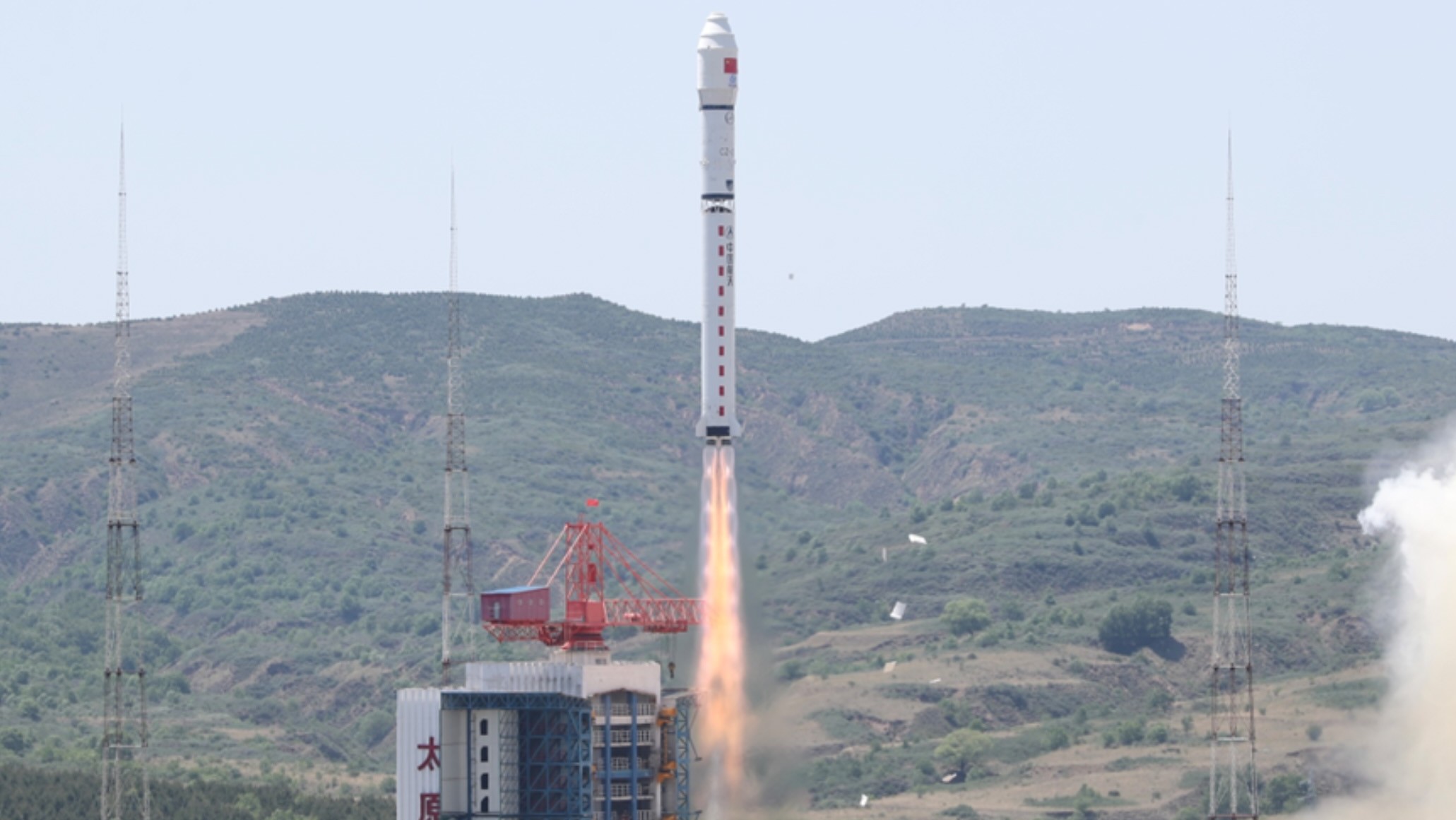China launches national-record 41 satellites on single rocket (video)
But that's a long way from the global record of 143, set during a SpaceX launch in 2021.
China just broke its own national record for satellites launched by a single rocket.
A Long March 2D rocket lifted off from Taiyuan Satellite Launch Center in north China Thursday (June 15) at 1:30 a.m. EDT (0530 GMT, or 13:30 local time). Insulation tiles fell away from the rocket as it rose into blue skies above the hills surrounding Taiyuan, and shock diamonds were visible in its purple exhaust plume.
A total of 41 small satellites were released into orbit. These were the Jilin-1 GF06A0 satellites 1-30, Jilin-1GF03D 19-26, HEGS-1 and Jilin-1 PT02A01/02 for Chinese commercial remote sensing satellite company Changguang Satellite (CGST).
Related: The latest news about China's space program
The launch broke the previous Chinese record of 26 satellites on a single launch, set just days earlier by a Lijian 1 rocket developed by commercial company CAS Space. The overall record is 143 satellites, set during SpaceX's Transporter-1 rideshare mission in January 2021.
The satellites launched on Thursday mainly add to CGST's Jilin-1 commercial remote sensing constellation. CGST aims to put more than 300 satellites in orbit by 2025, more than doubling its earlier plan of launching 138 Jilin-1 satellites by the end of that year.
The Jilin-1 Gaofen 06A17-18 satellites are small, light, high-resolution optical remote sensing satellites also known as Golden Bauhinia satellites 37-38. They're part of the Golden Bauhinia constellation planned by the Hong Kong Aerospace Science and Technology Group. HEGS-1 is a satellite jointly developed by CGST and Aerospace (Xinjiang) Science and Technology Research Institute Co., Ltd. It's the first satellite for a constellation focused on aiding the social development of Xinjiang and the construction of the Belt and Road project.
Breaking space news, the latest updates on rocket launches, skywatching events and more!
The PT02A01 and 02 satellites are described by CGST as being low-cost, high-capacity, high-resolution remote sensing satellites carrying the company's self-developed laser communication loads. They'll be used to verify high-speed inter-satellite and satellite-to-ground communication technologies.
CGST is a satellite manufacturer and operator based in Jilin in northeast China, spun off from an institute under the Chinese Academy of Sciences.
The 135-foot-tall (41 meters) Long March 2D can carry 2,866 pounds (1,300 kilograms) of payload to a 435-mile-high (700 kilometers) sun-synchronous orbit. The mission was the 25th launch carrying Jilin-1 satellites.
The launch was China's 24th of the year. The country plans to launch more than 200 spacecraft across 2023.

Andrew is a freelance space journalist with a focus on reporting on China's rapidly growing space sector. He began writing for Space.com in 2019 and writes for SpaceNews, IEEE Spectrum, National Geographic, Sky & Telescope, New Scientist and others. Andrew first caught the space bug when, as a youngster, he saw Voyager images of other worlds in our solar system for the first time. Away from space, Andrew enjoys trail running in the forests of Finland. You can follow him on Twitter @AJ_FI.

